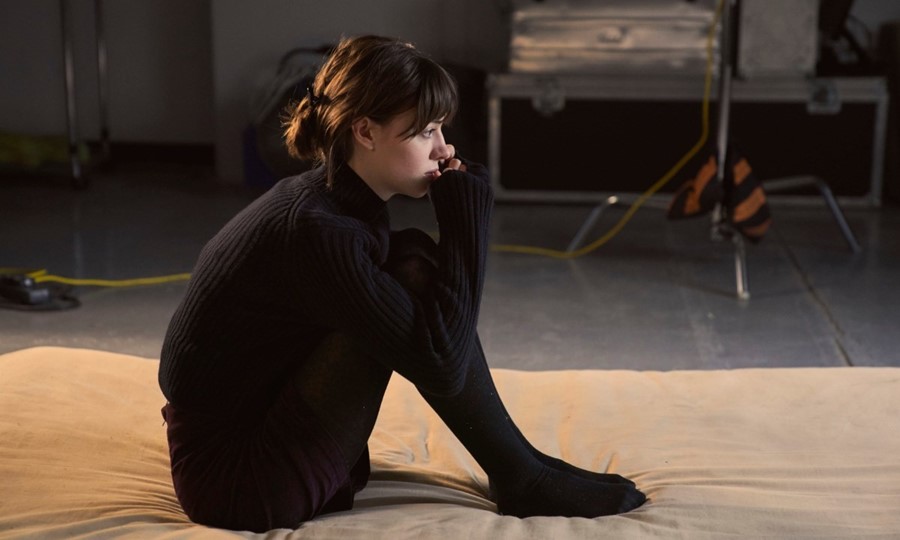There have been endless artistic reimaginings of women’s rage, heartbreak, and self-destruction – do these stories keep us in a state of perpetual victimhood, or are they brave and necessary?
The ‘sad girl’ has always been deeply embedded in our art and literature. Viscerally expressing their sorrow through music, fiction, paintings, and poetry, progenitors of the sad girl movement include Sylvia Plath, Jean Rhys and Virginia Woolf. In 2014, LA-based artist Audrey Wollen developed Sad Girl Theory, which proposed that enacting one’s own sorrow is a form of feminist resistance against the patriarchy. “I think that a sad girl’s self-destruction, no matter how silent or commonplace, is a strategy for subverting those [oppressive] systems,” Wollen writes. In doing so, this makes the implicit violence of womanhood visible, “implicating us all in her devastation”.
Today, it’s hard to escape the countless artistic reimaginings of “sad girl self-destruction” and women’s rage. Although some fiction – including Ottessa Moshfegh’s cult novel My Year of Rest and Relaxation and Ti West’s Pearl – playfully satirise the self-indulgence of the genre, testing the limits of our empathy for badly behaved sad girls, other recent entries into the sad girl canon fail to embolden the genre’s potential political efficacy. Once intended as a meaningful reflection on the trials of womanhood, many sad girl stories today are borderline trauma porn, creating villainous caricatures of men and leaving us without hope. Because of this, the last few months have seen a wave of debate sweep through certain corners of the internet, asking the vital questions: do sad girl narratives keep us stuck in a state of perpetual victimhood, or are these tales necessary and brave? And in 2023, are these sad girl stories even still necessary?
This discussion was partly sparked last month, when writer Isabel Kaplan published her article, ‘My boyfriend, a writer, broke up with me because I’m a writer’, in the Guardian. Response to the article divided Twitter – while many thanked her for writing it, writer Rachel Connolly suggested that the piece falls into the trap of celebrating “not female honesty ... but female abjection”. In response to Kaplan’s piece, writer Moya Lothian-McLean called for the deconstruction of “romantic victimhood”, whereby scorned women relay the intricacies of their heartache via social media. Her response piece offered a keen insight as to how the sad girl hivemind has begun to manifest in the digital age.
Online, a sense of camaraderie surrounds the purportedly slighted party, encouraging countless other women to pile in with similar experiences and their condolences. In turn, Lothian-Mclean argues that these “sweeping generalities” about romantic relationships help to reinforce rigid gender dichotomies; man and woman, villain and victim. “Constant romantic victimhood ignores an ugly truth: that patriarchy might ostensibly benefit men – even while poisoning them in a myriad of ways – but it is upheld by all genders,” she writes. “To forever be an injured party restricts us from confronting that but also prevents personal development.”
The appeal of sad girl stories is obvious: these narratives give a voice to the previously unsayable, typifying the frequent but ‘not that bad’ kind of harm women are often exposed to in relationships. But as noted in Eloise Hendy’s article, ‘How sad girls with bad boyfriends took over the internet’, alongside a greater cultural awareness of abuse and trauma theory, we’ve also developed the tendency to apply this language to situations “that – while undoubtedly upsetting – are both consensual and more complex than a strict division into the roles of ‘perpetrator’ and ‘victim’ allows.” Reflecting on the divided response to Lothian-McLean’s piece – which saw some users accuse her of being an abuse apologist – Hendy suggests that “feminists should work from the belief that men, and the patriarchal society that privileges but also devastates them, can change.”
“The popularity behind the bad boyfriend confessional isn’t because we hate the men we’ve dated – it’s simply because we wanted them to change and treat us better”
It’s here that Hendy touches on the uncomfortable truth behind most – if not all – sad girl confessionals. The popularity behind the bad boyfriend confessional isn’t because we hate the men we’ve dated – it’s simply because we wanted them to change and treat us better. There is a sort of ineffable anguish that surrounds this realisation – the idea that flawed beings (in this case, men) are capable of growth and treating others better after we have parted ways is a frustrating one. This is the version of them we could have had all along, but they simply didn’t give it to us. And it’s this sensibility that is often absent from these sad girl stories, quite likely because offering redemption to someone who hasn’t expressed remorse feels like a disservice to the pain they may have caused us.
That said, there is power in taking accountability for our own pain. The 2020 television adaptation of Sally Rooney’s Normal People – a contemporary contribution to the sad girl genre – inspired a collective grief as we watched Marianne Sheridan, played by Daisy Edgar-Jones, tearfully recall the shame of keeping her relationship with Connell (Paul Mescal) a secret in school. He asks her: “You mean the way I treated you?” to which Marianne tells him: “Yeah, and just the fact that I put up with it.” There’s a reconciliation between the two as Connell accepts his cruelty, but in a sentiment similar to Lothian-McLean’s piece, Marianne recognises her own part in choosing to endure it.
Many of us who date men yearn for closure and an apology we will likely never get, so it’s satisfying to see this conversation unfold on screen. As Normal People follows Connell’s struggles with mental health issues and his eventual recovery, his character escapes the fallacy of the one-dimensional villain. More importantly, Rooney’s work explores how to forgive and make amends.
Other offerings into the sad girl genre include fellow Irish authors Naoise Dolan and Megan Nolan, both of whom are releasing their second novels this year with Ordinary Human Failings and The Happy Couple respectively. Nolan’s debut, Acts of Desperation, chronicles how one woman’s relationship becomes a site of sacrificial masochism before ultimately rejecting the construction of her own victimhood. In Dolan’s Exciting Times, TEFL teacher Ava is far more sardonic about her undefined relationship with Oxford grad and banker Julian. There’s a brutal self-awareness to her narrative as she accepts this is not a loving romantic relationship, but instead one where she never quite knows where she stands.
There’s an element of frustration in both novels as the young protagonists form attachments to men who leave them unfulfilled. But perhaps here lies the skill of the well-done sad girl novel – it poignantly captures the contradictions of pursuing romantic relationships where we are consciously mistreated and neglected. While Rooney’s novels offer the scope for men to redeem themselves and seek forgiveness, Dolan and Nolan choose to explore the complexity of the modern heterosexual landscape and the logic that compels us to stay.
Perhaps the future of sad girl art isn’t writing it off altogether. Instead of viewing these stories as deliberate attempts to disparage all men, we must reframe our understanding of them as writers’ attempts to have their pain validated and honoured in a way they might not otherwise be. In the spirit of bell hooks, perhaps we just need to ask ourselves how we can be truly accountable for the harm we cause, and how we can forgive, heal, and know when to finally walk away.
Join Dazed Club and be part of our world! You get exclusive access to events, parties, festivals and our editors, as well as a free subscription to Dazed for a year. Join for £5/month today.




